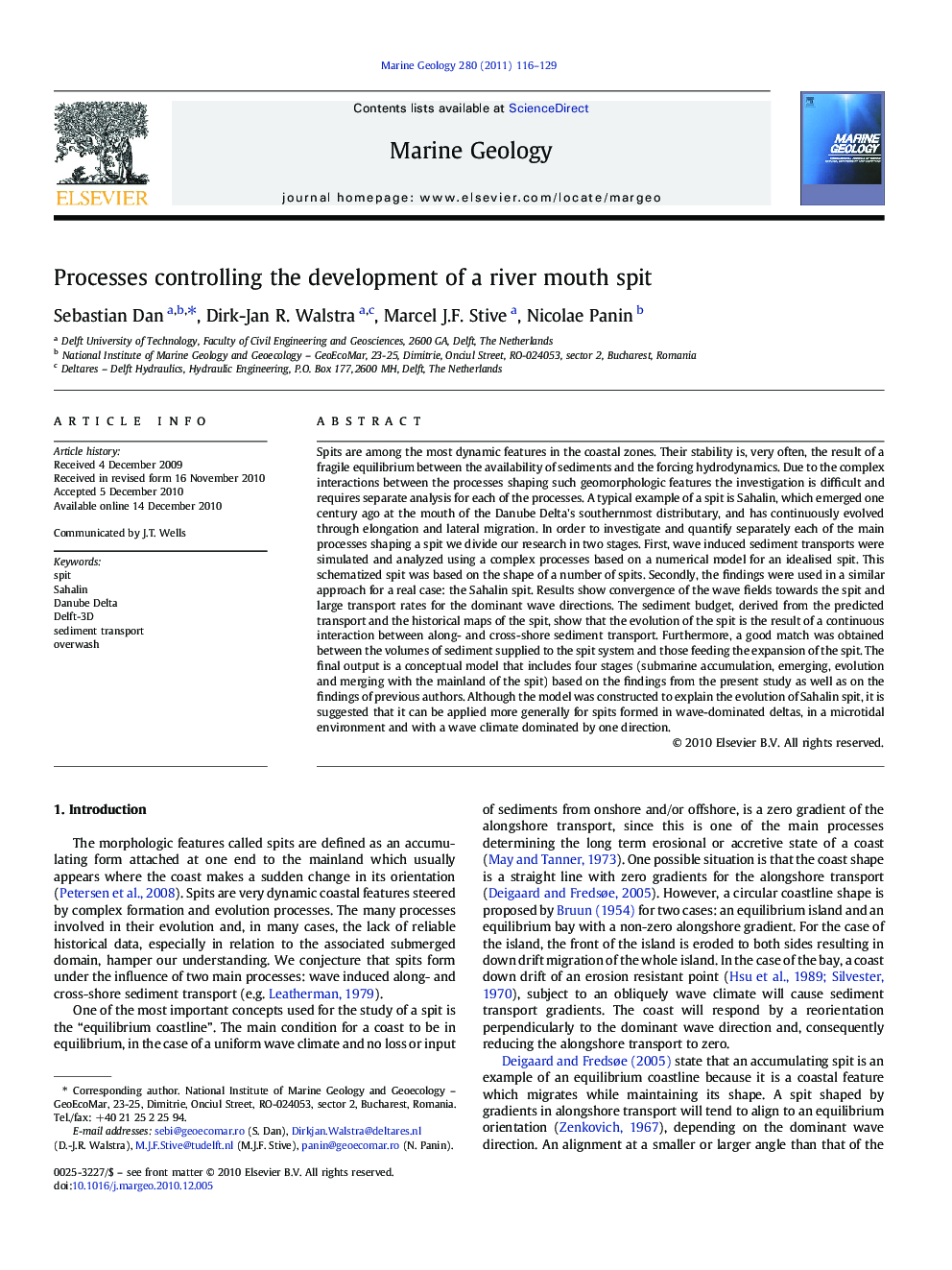| Article ID | Journal | Published Year | Pages | File Type |
|---|---|---|---|---|
| 6441854 | Marine Geology | 2011 | 14 Pages |
Abstract
Spits are among the most dynamic features in the coastal zones. Their stability is, very often, the result of a fragile equilibrium between the availability of sediments and the forcing hydrodynamics. Due to the complex interactions between the processes shaping such geomorphologic features the investigation is difficult and requires separate analysis for each of the processes. A typical example of a spit is Sahalin, which emerged one century ago at the mouth of the Danube Delta's southernmost distributary, and has continuously evolved through elongation and lateral migration. In order to investigate and quantify separately each of the main processes shaping a spit we divide our research in two stages. First, wave induced sediment transports were simulated and analyzed using a complex processes based on a numerical model for an idealised spit. This schematized spit was based on the shape of a number of spits. Secondly, the findings were used in a similar approach for a real case: the Sahalin spit. Results show convergence of the wave fields towards the spit and large transport rates for the dominant wave directions. The sediment budget, derived from the predicted transport and the historical maps of the spit, show that the evolution of the spit is the result of a continuous interaction between along- and cross-shore sediment transport. Furthermore, a good match was obtained between the volumes of sediment supplied to the spit system and those feeding the expansion of the spit. The final output is a conceptual model that includes four stages (submarine accumulation, emerging, evolution and merging with the mainland of the spit) based on the findings from the present study as well as on the findings of previous authors. Although the model was constructed to explain the evolution of Sahalin spit, it is suggested that it can be applied more generally for spits formed in wave-dominated deltas, in a microtidal environment and with a wave climate dominated by one direction.
Related Topics
Physical Sciences and Engineering
Earth and Planetary Sciences
Geochemistry and Petrology
Authors
Sebastian Dan, Dirk-Jan R. Walstra, Marcel J.F. Stive, Nicolae Panin,
